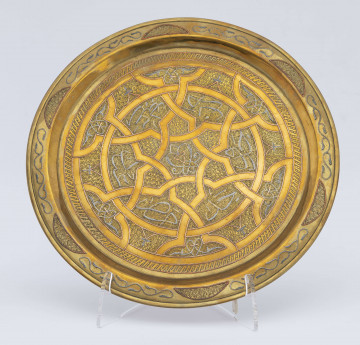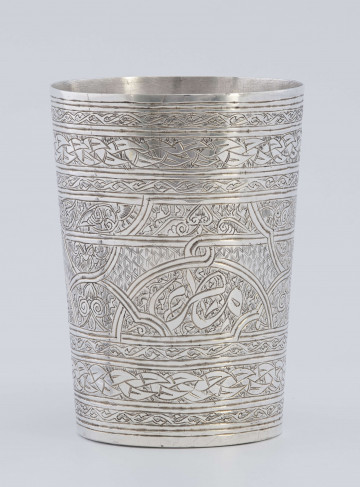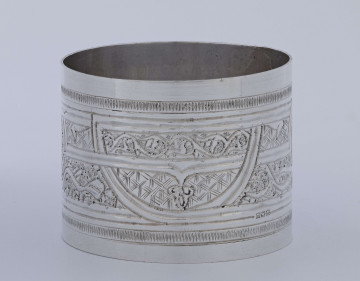
Tray
20th century
National Museum in Lublin
Part of the collection: European classics of modernity
In addition to providing pompous battle scenes, the trend of 19th-century Orientalism introduced the contemporary to distant lands, supporting ethnographic research and stimulating the romantic fashion for the aesthetics of Baśni tysiąca i jednej nocy [The Tale of a Thousand and One Nights]. One of the first Polish artists who participated in expeditions to the Middle East was Franciszek Tepa. The painter studied under Jan Maszkowski in Lviv, Ferdinand Georg Waldmüller in Vienna and Wilhelm Kaulbach in Munich. His work Bedouins in Lebanon is a reminiscence of joining, in 1852-1853, the expedition of Counts Adam and Katarzyna Potocki, replacing Juliusz Kossak. The aristocrats, having set off on the Lloyd's passenger liner from Trieste to Alexandria, visited Egypt with Nubia, the Holy Land, later Lebanon, Syria and Turkey. Apart from the draughtsman, they also took with them a friend of the house, Count Kazimierz Potulicki, and Maurycy Mann, editor of the Kraków-based Czas, founded by Potocki. The journal periodically published Letters from the East, later collected into a three-volume book entitled Mann's Journey to the East (Kraków 1854-1855). Tepa brought back to his homeland many sketchbooks, on the basis of which he started to paint pictures, which were shown at the General Exhibitions of the Kraków Society of Friends of Fine Arts in 1854 and 1855. Then, living in Paris for six years, thanks to the support of Polish patrons, the artist undertook additional studies under the most popular orientalist painter Léon Cogniet and the portraitist of European courts Franz Xaver Winterhalter. The unflagging popularity of Arab themes caused him to return repeatedly to the oasis and desert landscapes and to drawing, water-colouring, and rarely oil costume studies of their inhabitants. The work, held in the collection of the National Museum in Szczecin and first exhibited at the Paris Salon of 1861, is one of the largest in format and most academically developed compositions of its type.
Szymon Piotr Kubiak
Author / creator
Dimensions
cały obiekt: height: 53 cm, width: 72 cm
Object type
painting
Creation time / dating
Creation / finding place
Identification number
Location / status

20th century
National Museum in Lublin

20th century
National Museum in Lublin

1920-1950
National Museum in Lublin
DISCOVER this TOPIC
National Museum in Szczecin
DISCOVER this PATH
Educational path